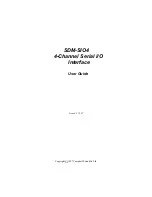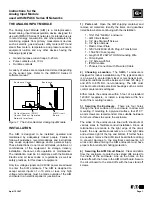
INSTALLATION INSTRUCTIONS
M S D I G N I T I O N
• w w w . m s d i g n i t i o n . c o m • ( 9 1 5 ) 8 5 7 - 5 2 0 0 • FA X ( 9 1 5 ) 8 5 7 - 3 3 4 4
Basic Wiring:
This example illustrates how to connect the RAS to activate a shift light at 7,000 rpm
(Figure 9).
1. Connect the Gray wire to the RAS On/Off terminal and to a switched 12 volt source. This "prepares"
the RAS circuit so when the desired rpm is reached the "Output Ras" will provide a ground to activate
the light. A jumper is supplied to connect the "IGN" terminal to the RAS ON/OFF.
2. Connect the Yellow wire to the "RAS Output" terminal and the other end to the ground side of the
shift light.
note:
Twelve volts must be connected to the other side of the light.
3. Place a 7,000 rpm module in the RAS plug. When the engine reaches 7,000 rpm, a ground path
for the shift light will be supplied and the light will turn on.
note:
The light will remain on until the
rpm falls 5% below the amount of the module. When you shift, the rpm drops and the light turns
off until 7,000 rpm, when a ground path is again provided and the light turns on.
Incorporating the raS On/Off:
With the "RAS On/Off" terminal, you can control exactly when the
RPM Switch is activated. This example illustrates how to turn on a nitrous solenoid at 5,000 rpm, but
only
when the car is in high gear (Figure 10). To do this, 12 volts must be applied to the "RAS On/Off"
terminal
only
during high gear. This can be accomplished with a micro switch on the shifter.
Figure 9 Connecting the RPM Activated Switch.
Figure 10 Activating the RAS in High Gear Only.






























